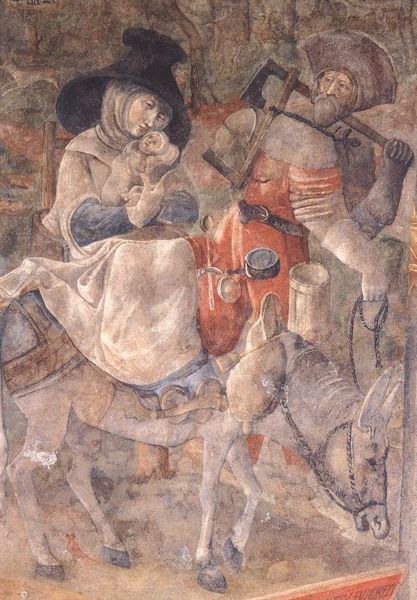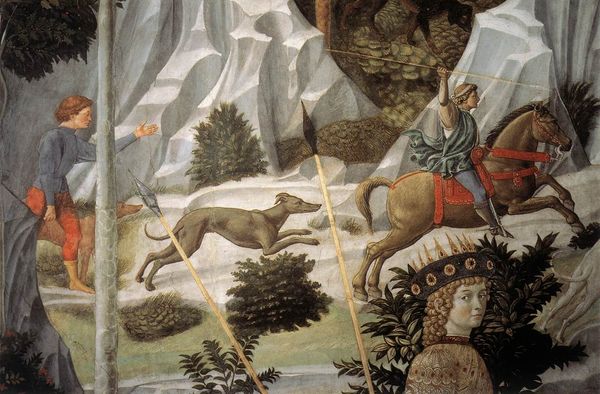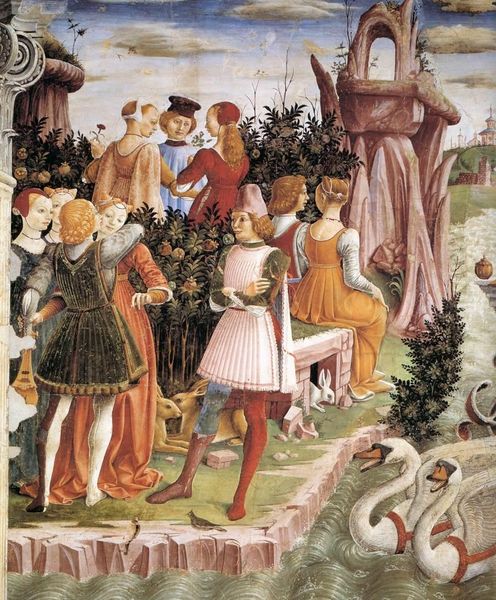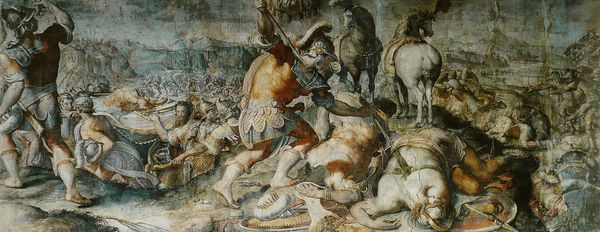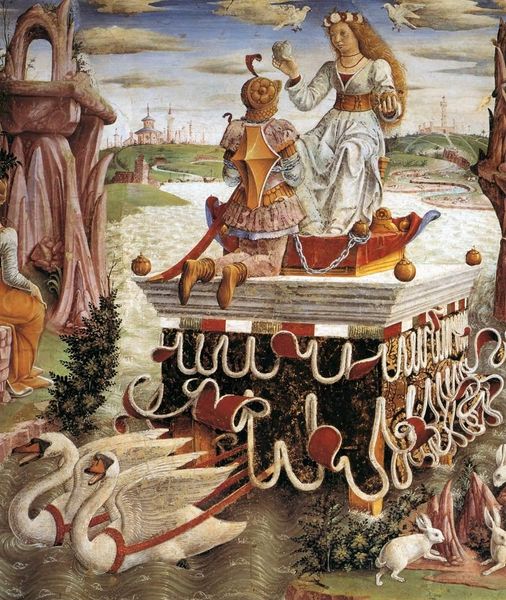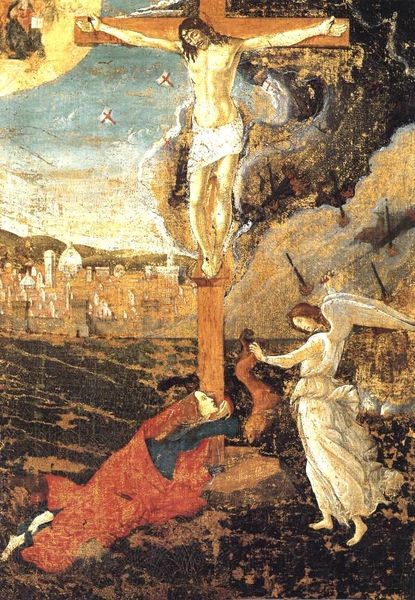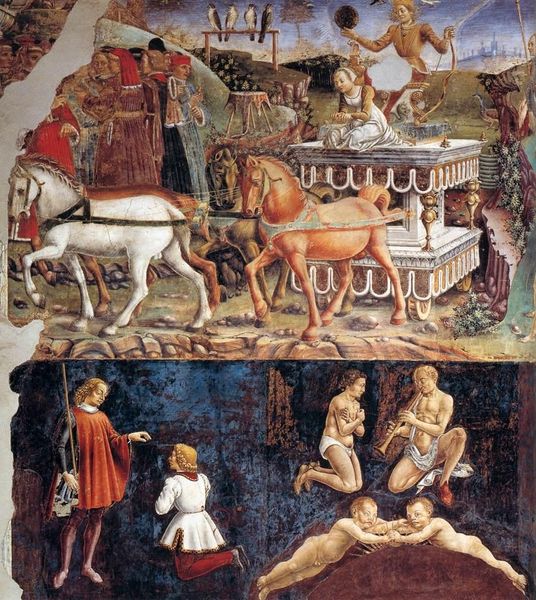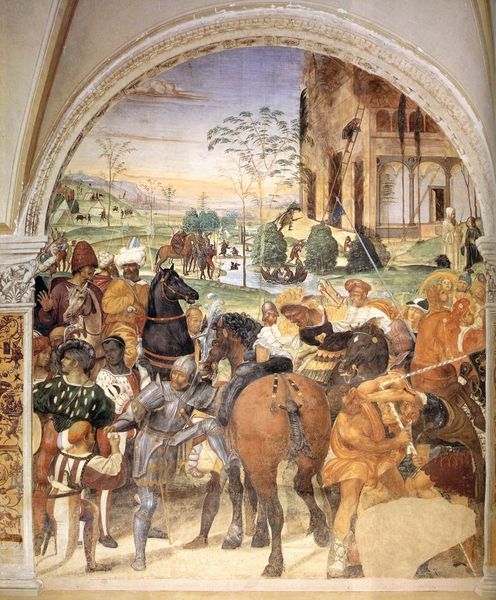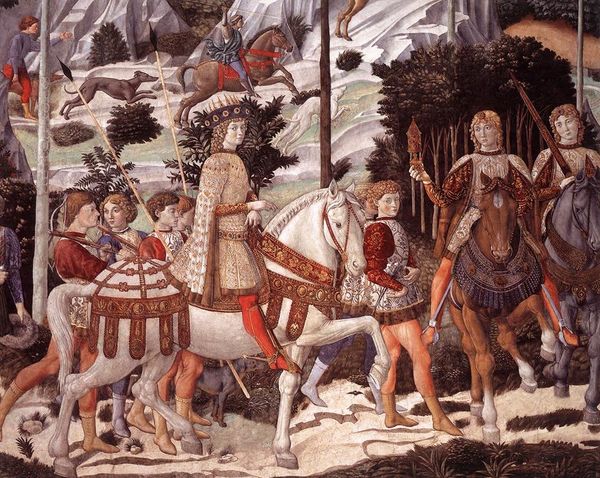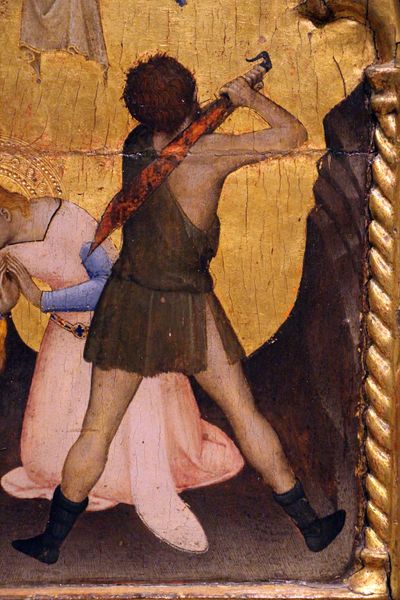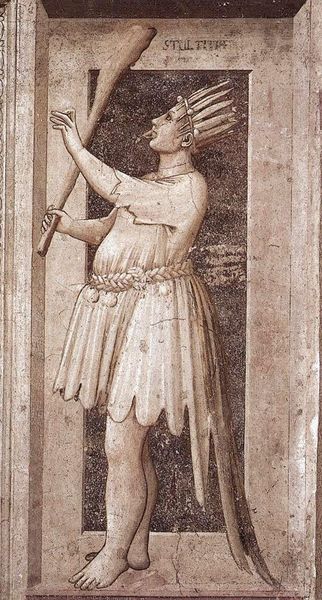
Allegory of March – Triumph of Minerva and Sign of Aries. Frescos in Palazzo Schifanoia (detail) 1470
0:00
0:00
painting, fresco
#
portrait
#
painting
#
figuration
#
fresco
#
oil painting
#
mythology
#
history-painting
#
italian-renaissance
Copyright: Public domain
Editor: So this detail comes from Francesco del Cossa’s fresco, "Allegory of March – Triumph of Minerva and Sign of Aries" made around 1470. I find the way the fresco is crumbling almost as interesting as the figures themselves. What strikes you most about this fragment? Curator: The disintegration you mentioned is key. These aren’t pristine oil paintings meant to last. Fresco, painted directly onto plaster, was labor-intensive, communal work. The very materiality speaks of its time, reflecting a society deeply intertwined with the cyclical nature of production, its temporality. How might the hurried, practical necessities in their creation reflect socio-economic needs? Editor: That’s a really interesting point about the production itself being revealing. I hadn't considered that the technique tells us about broader society at the time. The imagery itself seems like pure propaganda of the ruling class! Curator: Exactly! Consider the pigments. Where did they come from? Who mined them? How did they become luxury goods in the hands of the Ferrara elite who commissioned the Palazzo Schifanoia? Cossa, therefore, isn’t just representing triumph, but also the control over resources and labor required to produce that representation, wouldn't you say? Editor: Yes, the availability of raw materials dictated the colours that the artist could use. Now I realize I should look more closely at the economic drivers behind art making. Curator: It pushes us to examine not just *what* is represented, but *how* it was made possible and who was doing the creating. What are your thoughts about this today? Editor: I hadn’t really focused on production processes before. The making-of really expands my thinking, not just about art of the Renaissance but how images today are shaped by the available technology and economic realities too. Thank you for the new view! Curator: My pleasure. Viewing art through this material lens really transforms how we interpret the narratives being presented.
Comments
No comments
Be the first to comment and join the conversation on the ultimate creative platform.

